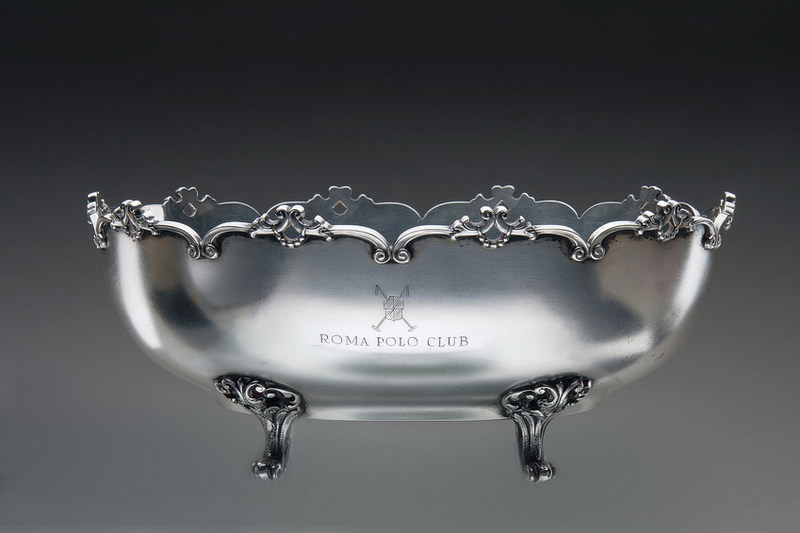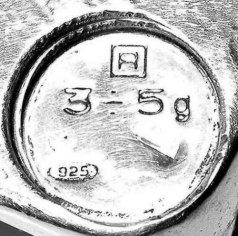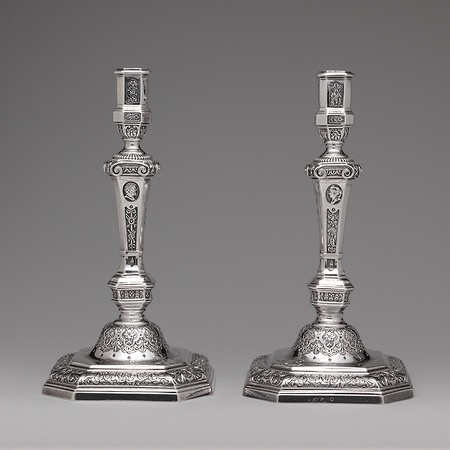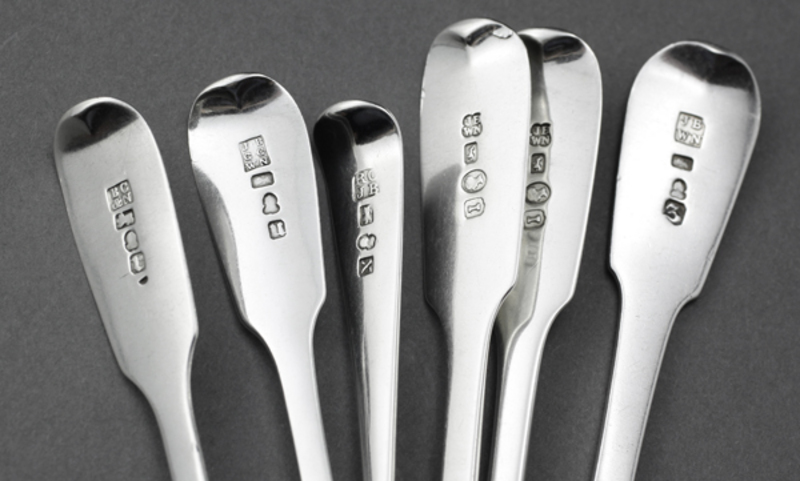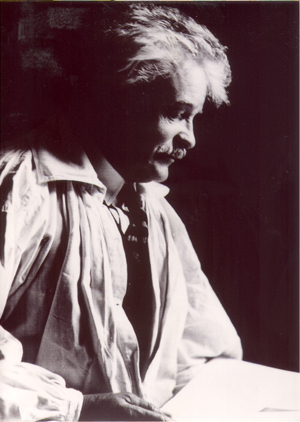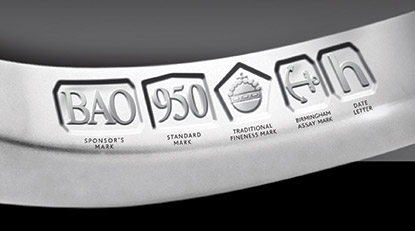HALLMARKS OF ITALIAN SILVER
(LATE 19TH AND 20TH CENTURY)
This is a brief history and a selection of Italian silver hallmarks from 1870 to present days.
The documentation about this period of Italian silversmithing is extremely scarce and difficult to find.
The objective of this page is to offer an introduction to this matter and a cue for a more deep study of this fascinating period.
In 1870, with the conquest of Rome and the end of Stato Pontificio (Papal State), Italy attained its unity and an unique system of hallmarking was introduced in the Regno d’Italia (Kingdom of Italy). The law 2 May 1872 deregulated silver production and introduced only a facultative inspection of silver artifacts.
|
1 |
|
facultative hallmark, purity degree 950/1000 |
|
2 |
|
facultative hallmark, purity degree 900/1000 |
|
3 |
|
facultative hallmark, purity degree 800/1000 |
The ‘800’ was an unofficial mark and there was no uniformity in its shape.
|
4 |
|
‘800‘ with oval outline and VM (presumably silversmith’s initials) |
|
5 |
|
‘800‘ without outline |
|
6 |
|
‘800‘ without outline coupled to silversmith’s hallmark |
|
7 |
|
‘800‘ without outline |
The law 5 February 1934 n. 305 introduced uniformity in the shape of silversmith’s marks.
The new mark identifying the silversmith consisted of a lozenge containing number corresponding to the number identifying the silversmith ‘fascio’: fascist party symboltwo letters: initials of the Province
The lozenge was coupled to an oval containing the purity degree 800 or 925 per thousand.
Official marks (legge 5 Febbraio 1934 n. 305)
|
8
|
 |
‘800’ and lozenge mark identifying the silversmith
number / fascio / province |
|
9
|
 |
lozenge with ‘fascio’
|
|
10
|
 |
purity degree ‘800 into an oval outline
|
The Law 26 October 1944 n. 313 (Decreto Legislativo Luogotenenziale 26 Ottobre 1944 n. 313) ordered the elimination of the ‘fascio’ (symbol of ‘fascism’) maintaining into the lozenge only the number (identification of the silversmith) and the two letters (initials of the Province).
The availability of new lozenges was not immediate and for a short period the old marks with the obliterated ‘fascio’ were maintained. I believe that in the period 1944/1946, before the new hallmarks were available, also temporary and not official marks were used.
Official mark (Decreto Legislativo 26 Ottobre 1944 n. 313)
|
11
|
 |
lozenge mark without ‘fascio’
number / province |
|
12
|
 |
temporary unofficial mark. Presumably PROV signifies PROVVISORIO (TEMPORARY)
|
The Laws 30 January 1968 (Legge 30 gennaio 1968 n. 46) and 30 December 1970 n. 1496 (D.P.R. 30 Dicembre 1970 n. 1496) introduced new hallmarks for silver and precious metals. The mark was modified to a polygogonal shape and a star was added on the left. Numbers and Province letter were maintained.
Purity degree 925, 835 and 800 per thousand were allowed and inscribed into an oval outlined mark.
This system is still in use in present days.
Official marks (Legge 30 Gennaio 1968 n. 46 and D.P.R. 30 Dicembre 1970 n. 1496 )
|
13
|
  |
polygon with ‘star’
star / number / province |
|
14
|
   |
purity degree into an oval outline‘800”925’
|
The ‘Decreto Legislativo 22 Maggio 1999, n. 251’ introduced a system of marks for objects made in precious metals and weighted with resin or mastic . The new mark is a R inside a square outline (the R is the abbreviation of ‘Riempito’ = filled in English).
Official marks (Decreto Legislativo 22 Maggio 1999, n. 251)

